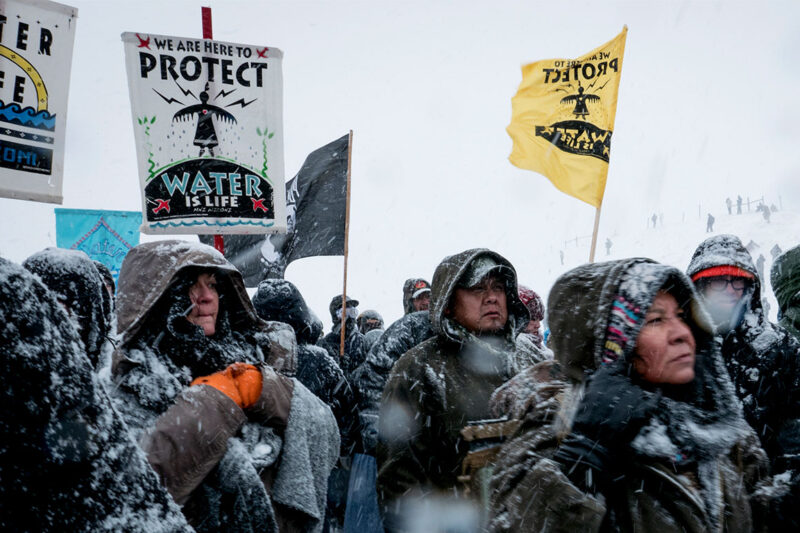President Trump Says the Dakota Access Pipeline ‘Serves the National Interest,’ Yet It Threatens Indian Rights and the Drinking Water of 18 Million People


STANDING ROCK INDIAN RESERVATION, N.D. — President Trump’s executive order yesterday has an impressive-sounding title: “Expediting Environmental Reviews and Approvals for High-Priority Infrastructure Projects.” What the title really should say, however, is: “How to Make Money for Big Oil Real Fast Despite the Human and Environmental Costs.”
The executive order makes no reference to the Dakota Access Pipeline, the 1,100-mile pipeline being constructed to carry nearly 500 million gallons of fracked crude oil from North Dakota to Illinois each day. Yet expediting the construction of DAPL is the obvious goal of the executive order. In fact, Trump signed a presidential memorandum at the same time he signed the executive order, stating his belief that construction of the pipeline would “serve the national interest.”
Unfortunately, Trump doesn’t mention in either the executive order or the memorandum that completing the construction of DAPL will require the U.S. Army Corps of Engineers to issue a permit allowing the pipeline to be constructed underneath the Missouri River, just north of the Standing Rock Sioux Reservation in North Dakota. He doesn’t mention that the route of the pipeline was first planned to traverse land further north until white landowners complained, causing a change in the route. He doesn’t mention that a leak of oil in the Missouri River would not only threaten federally protected water rights belonging to the Standing Rock Sioux but would pollute water used by some 18 million persons. He doesn’t mention that completion of DAPL would destroy sacred sites of the tribe. And, finally, he doesn’t mention that the owner of the company building DAPL contributed more than $100,000 to his election campaign.
Trump wants to expedite “high priority infrastructure projects.” But whose “priority” is really being served here?
The Obama administration recognized that the pipeline has the capacity to cause catastrophic misery and loss if it ruptures. Consequently, the Army Corps announced that a comprehensive study must be conducted into the project’s potential environmental impact before a permit could be issued. The Obama administration also confirmed that under federal law DAPL cannot be approved until proper consultation with the Standing Rock Sioux Tribe is completed. Moreover, under international legal principles, our government should seek the informed consent of indigenous people prior to undertaking a project on federal land that threatens their health and welfare.
Yet Trump seems determined to rush the approval process.
Trump wants to expedite “high priority infrastructure projects.” But whose “priority” is really being served here?
The Standing Rock Sioux Tribe strenuously argues that construction of the pipeline would violate its rights under federal treaties and statutes. Those are issues that may ultimately need to be litigated. At this point, however, Trump apparently agrees that the law requires the Army Corps to complete the environmental impact assessment and determine the threat to the environment before going ahead with the pipeline. The Trump administration should therefore allow the Army Corps to take the time it needs to conduct a careful and proper assessment of environmental impact, both to the general public and to the tribe.
Two interrelated questions which should be answered are: What risks are we willing to take to help big oil move fracked oil from North Dakota to Illinois, and was the choice of this route influenced by the fact that a leak would immediately impact an Indian tribe rather than white landowners?
Stephen L. Pevar’s book, “The Rights of Indians and Tribes” (Oxford 2012), is available here.
Stay informed
Sign up to be the first to hear about how to take action.
By completing this form, I agree to receive occasional emails per the terms of the ACLU's privacy statement.
By completing this form, I agree to receive occasional emails per the terms of the ACLU's privacy statement.

